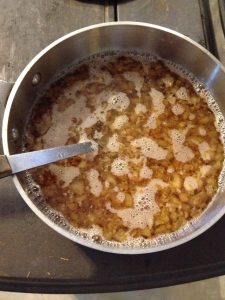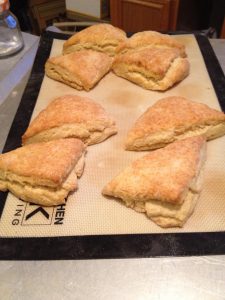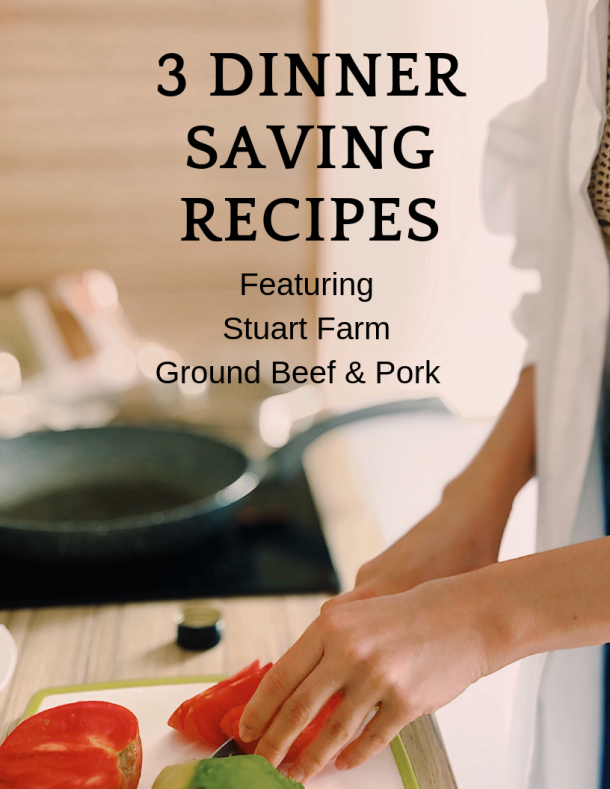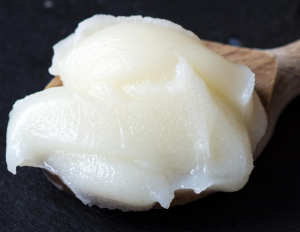 When we started with hogs, besides having super yummy pork, we were really excited about having lard. We LOVE cooking with lard.
When we started with hogs, besides having super yummy pork, we were really excited about having lard. We LOVE cooking with lard.
I know what you’re thinking, lard is BAD for you…isn’t it? Boy, do I have some good news for you!
How can lard be good for you?
When you get lard from hogs raised on pasture with lots of room to roam, soaking in the sunshine, and fed at the very least a non-GMO feed, you’re on the right track to some health benefits. Yes, I said it–HEALTH BENEFITS FROM LARD!
Lard is 48% monounsaturated fat which may help lower LDL (bad) cholesterol. Lard from pasture-raised hogs is the second highest food source in vitamin D, after cod liver oil. How does lard have so much vitamin D? Hogs absorb it from the sun and store it in their fat, which is why you want lard from hogs that live outside. There’s a lot to sort out when it comes to fats and Sally Fallon and Mary Enig do a great job explaining it in “The Skinny on Fats”.
When is lard bad for you?
Pretty much anything you buy in the store is NOT what you want. It’s hydrogenated–processed and mixed with lots of junk to make it whiter and more shelf-stable. If the label says more than hog fat, don’t buy it. And just because it’s local doesn’t mean the hogs haven’t been in confinement which will affect the quality and benefits of lard (and pork for that matter).
What about cholesterol?
Cholesterol is good for you. Very, VERY good for you. It aids in cell regeneration, proper synthesis and production of some hormones, especially sex hormones, and absorption of fat-soluble vitamins, to name a few. Those are all really important functions!
The body produces 80% of our cholesterol for a good reason and inherited genetic high cholesterol occurs in only .5% of the population. So “genetic high cholesterol” is more a combination of learned eating habits and excellent marketing of not-so-good-for-you foodstuff.
So, if our bodies make most of our cholesterol and it performs major bodily functions, why do we keep hearing cholesterol is bad and will clog our arteries and kill us?
Where we get mixed up about cholesterol is WHY our arteries clog. Hint–it’s not because we eat too much cholesterol.
When there’s chronic inflammation in our body, our liver is signaled to produce cholesterol and sends it out to ease the inflammation. This is different from acute inflammation from an injury like a sprained ankle or cut where white blood cells are rallied to help.
You see, cholesterol has healing properties in normal amounts. BUT, when your system is chronically inflamed, the amount of cholesterol in your system goes bonkers and starts to build up, walling off the inflamed site, clogging arteries. Your body is trying to heal itself, but can’t because the inflammation is too great. It just sends out more and more cholesterol to fight and it can build up.
So the question comes down to who’s to blame–the cholesterol that’s trying to heal your body or the inflammation calling on the liver to produce more and more cholesterol? To have a normal healing amount of cholesterol in your system, you have to eliminate what’s causing the inflammation.
Chronic inflammation can be caused by toxins we breathe in, like form smoking, and what we eat. Inflammatory foods are sugars, refined carbs (breads, crackers, cereals-even healthy organic ones), aspartame, gluten, oils (corn, safflower, sunflower, grapeseed, soy, peanut, and vegetable), and alcohol. 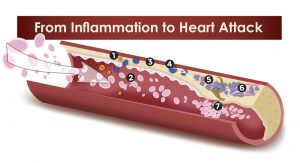
Low inflammation = low cholesterol. If you stop eating foods that cause inflammation, your LDL cholesterol can lower and change in type (more on types later) and HDL (the good stuff) increases on its own. No meds needed.
There have been several studies that show eating saturated fats do not increase your risk for heart disease, but eating sugary and starchy food can double your risk (Source). Cholesterol also has a crucial role in synthesizing Vitamin D. This article has great information about Vitamin D and cholesterol.
There’s still a lot of out of date info about cholesterol circulating and it’s hard to move past the idea of a low-fat diet being good for you. You can read this, this, and this article for more great information about why you should rethink the cholesterol myths. And this article is the latest on the myth of saturated fats and heart disease you really need to read.
And remember the fat-soluble vitamins I mentioned earlier? What that means is if you don’t have enough fat in your diet, you won’t be able to absorb those vitamins as easily. That means they won’t get stored in your fat and liver for later use. That expensive supplement pill or powder you take daily for your vitamin A, K, E, and D? If you don’t take them with a balanced meal including fats, you may not be getting your money’s worth.
My Story
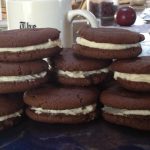
When my cholesterol was at 200, my doctor at the time was hinting at meds. I had other plans. After some research, I decided we would eliminate all processed sugary treats, decrease our bread and boxed processed foods intake. If we wanted a sweet treat, we would have to make it and I’d usually cut the sugar amount in half.
At first, we went crazy making sweets and bread. Then it became quite a bit of work, so we slowed down and more often than not, just went without.
Some of the changes: Fred was eating 2 sandwiches a day for lunch and that dropped to one–taking out about 15 loaves of bread a year from his diet. We replaced store-bought bread with sourdough bread Fred made because it’s easier on your digestion and blood sugar (now I will buy store-bought sprouted bread). I slowly weaned us off chocolate chips-our throwdown sweet-from 52 bags to 26 to less than 12 a year. Switched from flour to corn tortillas and dropped the amount of sugar Fred put in his tea.
Within a year, both of our total cholesterol dropped 20 points and our HDL increased. Now, this whole time we ate a minimum of 3 eggs a day each and LOTS of meat. Most doctors would say to cut those things out because of the cholesterol. But since we cut down on sugar and flour, our liver was not sending out the signal to produce excess cholesterol and our bodies were able to utilize fat-soluble vitamins better. And remember, we only get 20% of our cholesterol from food.
What we were doing was eating healthy pasture-raised animal fats that were actually nourishing our bodies while removing/reducing sugar, grains, and chemicals that cause inflammation.
To be clear, we don’t always eat the best. If we are out and about, Fred may get a soda. We’ll have a slice of cake or pie at a family gathering. I’ll beg Fred to make kettle corn for movie night. Eating better is not an all or nothing thing. It’s just that, eating BETTER. I don’t beat myself up when I eat less than great, I just do better.
What do the numbers mean?
More important than total cholesterol is your cholesterol ratio and if you have a high LDL, what type of LDL.
Your ratio is your total cholesterol divided by your HDL level. The optimal ratio is between 1:1 and 3.5:1. A higher ratio increases the risk of heart disease.
Not all LDL is created equal and your run of the mill lipid test doesn’t give you the big picture. LDL can be tested to tell you if your LDL is large, medium, small, or very small. Large decreases your chance of heart disease and very small increases it.
Let’s look at my last Lipid panel with the normal range in ( ).
Total: 217 (<200)
Triglycerides: 51 (<150)
HDL: 86 (40-59)
LDL calculated: 121 (<100)
Non-HDL cholesterol: 131 (<130)
Ratio: 2.5:1 (217/86 = 2.52)
At first glance, you are probably freaking out, right? What’s low seems so low, and what’s high seems so high. My doctor was so happy with these results. Here’s why (and why I LOVE my Dr.).
While I didn’t have my LDL broken down to the type, which I will next time, my doctor knows my diet and exercise level and takes everything into account. Super low Triglycerides but high LDL, a diet full of good fat, and an active lifestyle means more than likely, my LDL is the large type and not the small stick to my artery wall type.
What about that low Triglyceride number? Very-low-density-lipoprotein, VLDL, the small LDL, is made up of triglycerides, cholesterol, and apolipoproteins. Not a lot of triglycerides, not a lot of VLDL.
See that HDL off the charts? That means I have a lot of “good” fluffy cholesterol keeping any “bad” small LDL cholesterol in check.
When you remove my good HDL from the equation, my Non-HDL cholesterol could still be seen as borderline. But again, looking at the big picture, my doctor sees an overall low risk of heart disease.
Are you thinking, “you didn’t mention your TOTAL cholesterol!” There’s a good reason for that. As my doctor says, it doesn’t really matter. It’s what the other numbers tell TOGETHER that gives you a more accurate picture of your health and heart disease risk. This is the thinking among doctors as they open up to the new research on cholesterol and heart health.
Want to learn more about cholesterol? Read The Great Cholesterol Myth by Jonny Bowden, Ph.D., C.N.S., and Stephen T. Sinatra, M.D. You can listen to it for free on the Hoopla app.
What do I do with my lard?
Oh, good lard, I am so glad you asked! Yes, there has to be at least one lard joke.
My Mexican grandmother used lard generously. I have her HUGE cast iron pan she used to make fried rice and beans in. I can still smell the chili soaking into the hot lard and the amazing glistening that coated everything she cooked. You really can use lard for all your cooking needs.
Lard makes THE BEST biscuits and pie crusts. Lard gives baked goods light flakiness you just can’t get from other fats.
Now that we have lard, I use it for sauteing and roasting veggies or browning meats. You can use less lard and get better flavor and less oiliness. It also makes the best fried eggs.
Lard had a higher smoke point, so frying in lard makes the best fried chicken or fish. Did you know when you heat vegetable oils too high or reuse it, it oxidizes and releases free radicals that can cause inflammation? No thanks!
Lard is a great butter replacement on pasta and bread. Mix in some herbs and spices, let it set in the fridge overnight, and use it as you would butter.
Real pure lard is fine at room temperature and won’t go bad for months, but we store what we are using in the fridge and extra in the freezer.
If you are interested in how and why we stopped using lard and started eating things like margarine and Crisco, click here.
Ready to try some lard? Click here to order!
Want to make your own? Click here for leaf fat.
>>> I am Not A Physician <<<
**Disclaimer: I am not a physician and this is not medical advice. If you have concerns about your cholesterol level and health, please contact a physician you trust and is informed of the latest research. If you are currently taking a cholesterol-lowering medication, please contact your physician before decreasing or stopping any medication.**
This article is about my research and my health changes and is only serving as encouragement for you to continue researching your health and medical options. A physician who listens to your concerns and values your input is the best place to start taking control of your health.
